The Republic of Ireland hosted Finland in the UEFA Nations League in what was newly appointed Ireland manager Stephen Kenny’s first home game in charge.
Finland ran out 0-1 winners with a goal on 63 minutes from the FC Augsburg frontman Fredrick Jensen. The young Bundesliga star converted after 19 seconds from entering the field with only three touches in the game up to that finish.
An unflattering scoreline at a glance, however, both sides showed they are improving in the modern era of football, and for tactical enthusiast of the beautiful game, there was much to admire.
The tactical analysis below tells the story of the game from a tactical standpoint. The analysis looks at how both managers tactics and how they set their sides up to get success while nullifying their opponent.
Lineups
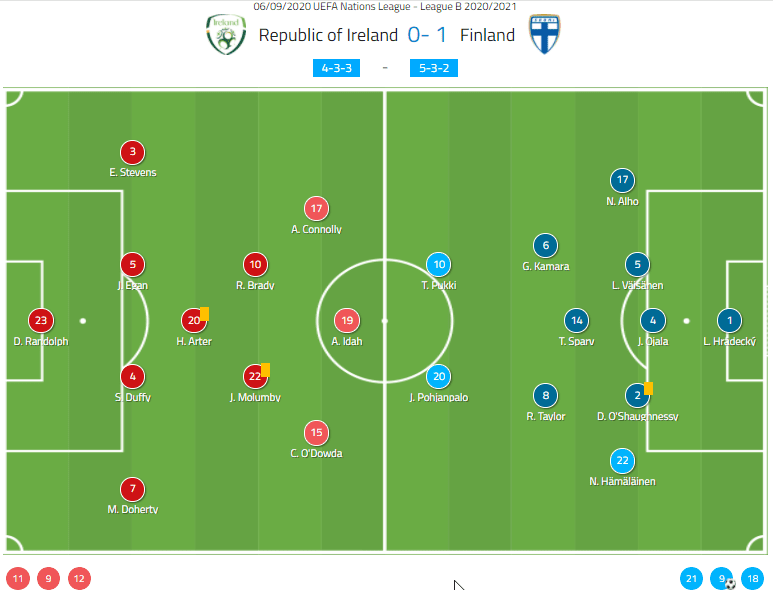
Ireland: 4-3-3
The manager kept this system for 90+ minutes, making three changes that would be considered like for like in the second half. Both wide forwards played on their natural side, ruling out the chances to cut inside as inverted wingers to change the point of attack in the final third.
The full-backs were integral to Ireland’s style of play, as Ireland targetted success from wide areas with the delivery of crosses from both wide men. Adam Idah, the young Irish centre-forward made his second start at senior level as a ‘9’, challenged with the difficult task of holding up the play and contesting for crosses against a strong back five.
Finland: 3-5-2
Although the average formation considered by the data is Finland played a 5-3-2, this only reflects their defensive shape. In possession and going forward, Finland morphed into a 3-5-2.
Finland was very dynamic going forward; both wing-backs were very prominent in the final third. While the two strikers, Bayer Leverkusen’s Joel Pohjanpalo and the Norwich City’s striker of the recent Premier League season Teemu Pukki linked up very well and always seemed a threat around the Ireland box. Markku Kanerva kept the same formation throughout the entirety of the match.
Ireland forced to the flanks
Opting for a patient build-up where the full-backs are present in every third of the field as the play graduates to the opponent’s penalty area, Ireland showed they could dominate the ball however they did not have it all their way.
Starting with short passes inside the box from restarts, the full-backs would carry the ball into the middle third. It was here they looked for short combinations and forward passing options in the channels to develop crossing opportunities.
The wide forwards played on the side of their dominant foot, so to affect the game when dribbling, they were forced to beat the full-backs on the outside. This made it difficult to change the point of the attack in the final third and made a lot of attacks predictable.
Although Ireland exercised a lot of patience and efficiency in their horizontal passing across the defensive unit, they struggled to increase the tempo in the final third. Meaning Ireland seldom looked like penetrating the Finnish defence centrally or out wide.
Ireland did have moments where they seemed like finding the breakthrough, but for lack of perfection in finishing and perhaps congruence between the forwards when entering the box, the boys in Green failed to find the answer in front of goal on this occasion.
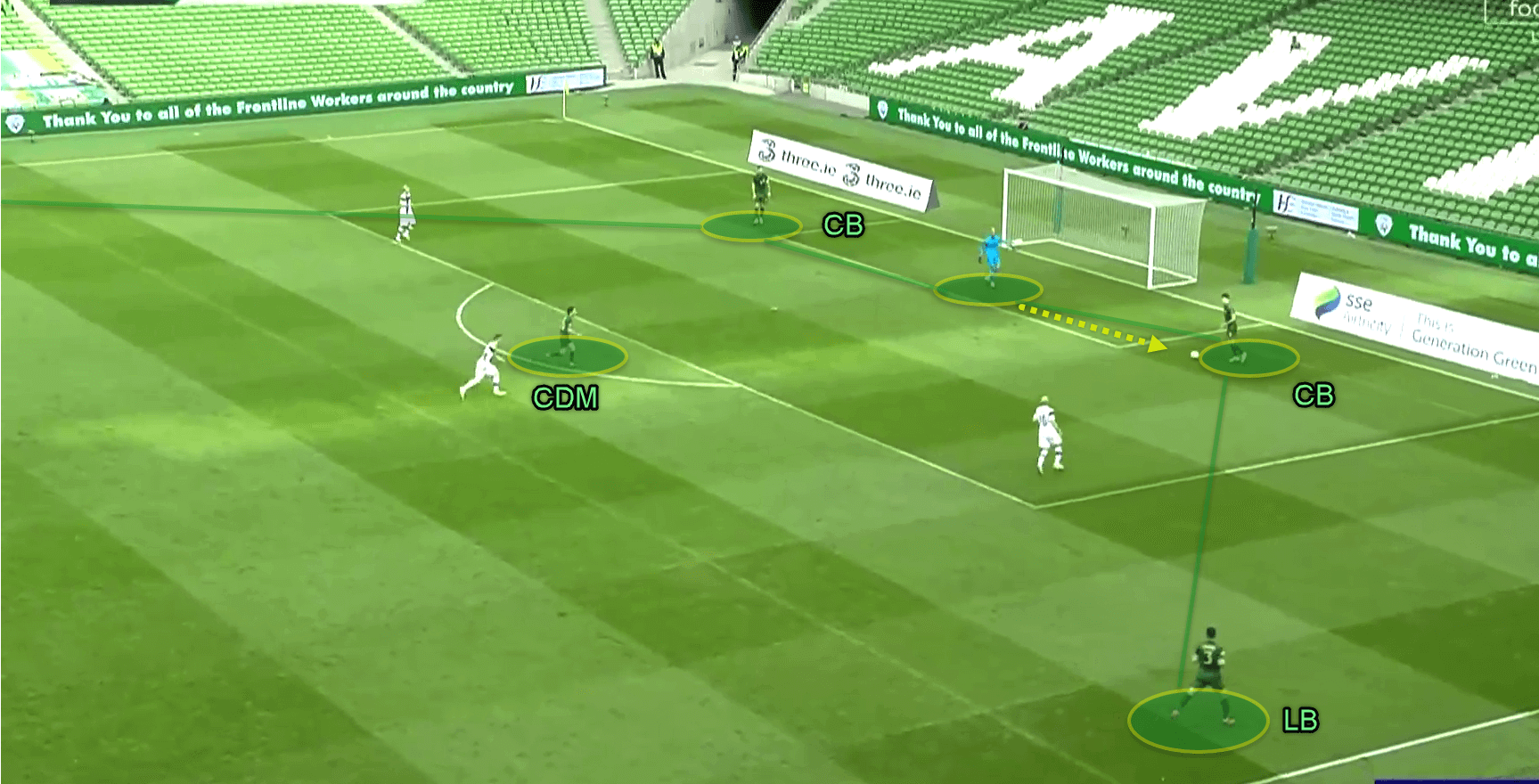
Ireland opting for short passes inside the box, Goalkeeper Darren Randolph plays a short pass to start the play. The CDM drops to offer an outlet in the centre.
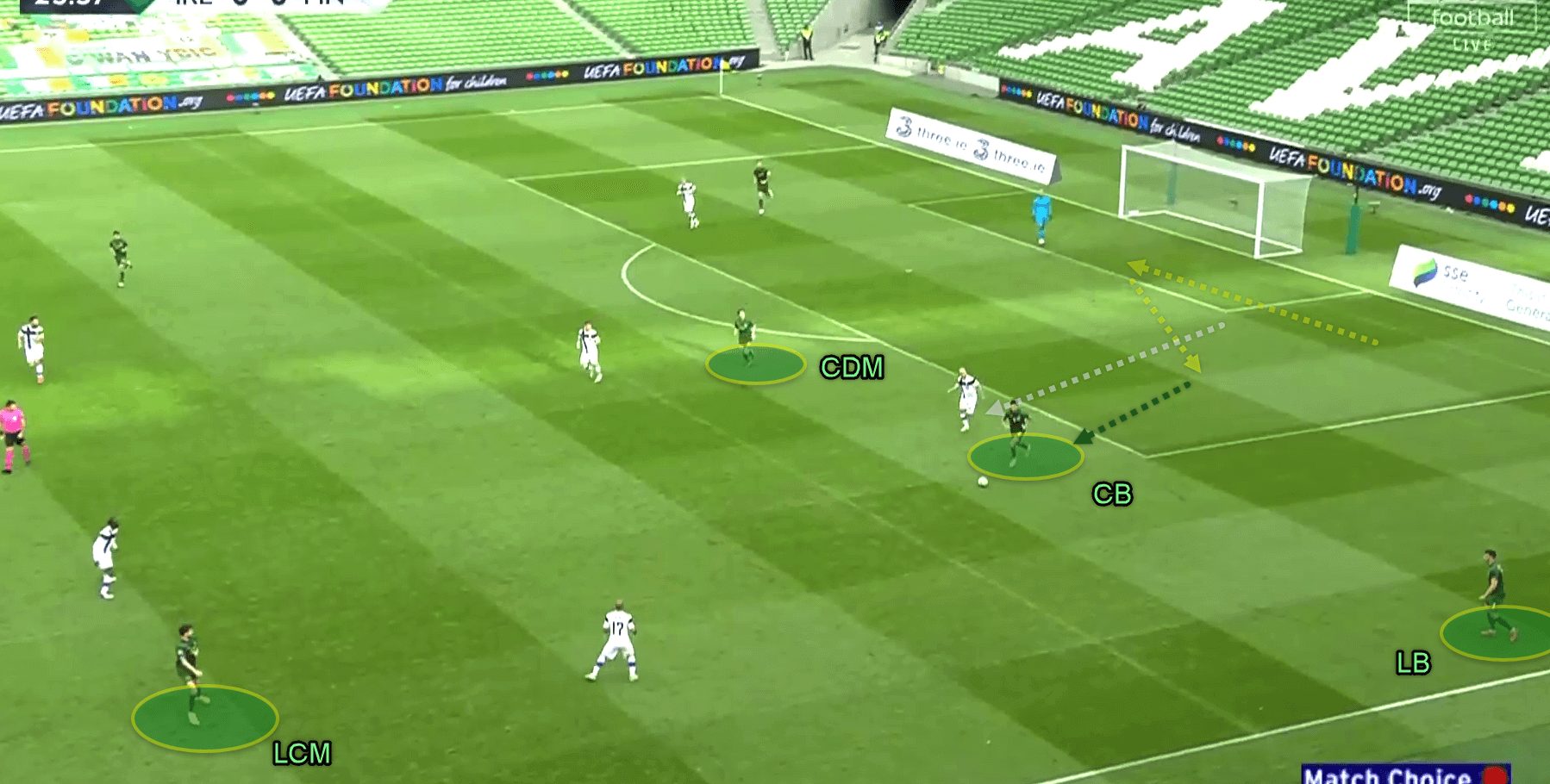
After a spell of passes under minimal pressure, the Irish centre-back emerges from the box driving forward into the middle third in possession, still with passing opportunities forward and out wide.
As the men in Green were forced into wide areas because of Finland’s compact mid-block, they frequently exercised two patterns of play that they hoped would unlock the Finnish backline.
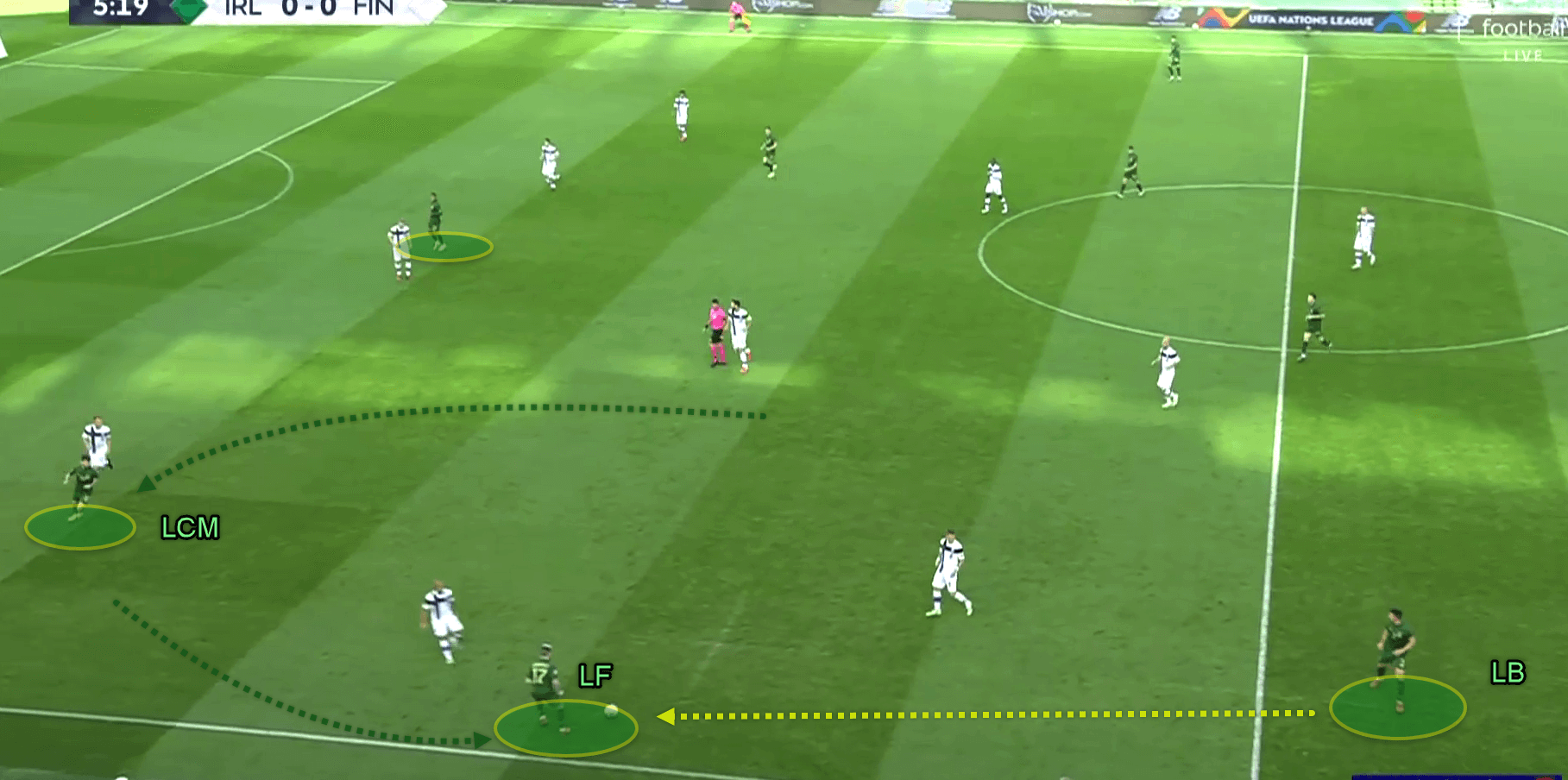
First, a rotation between the full-back and the near side central-midfielder. As the left-back drives towards the halfway line, The left forward makes an angled run out wide towards the full-back, meanwhile the central-midfielder sprints into space created by the forward.
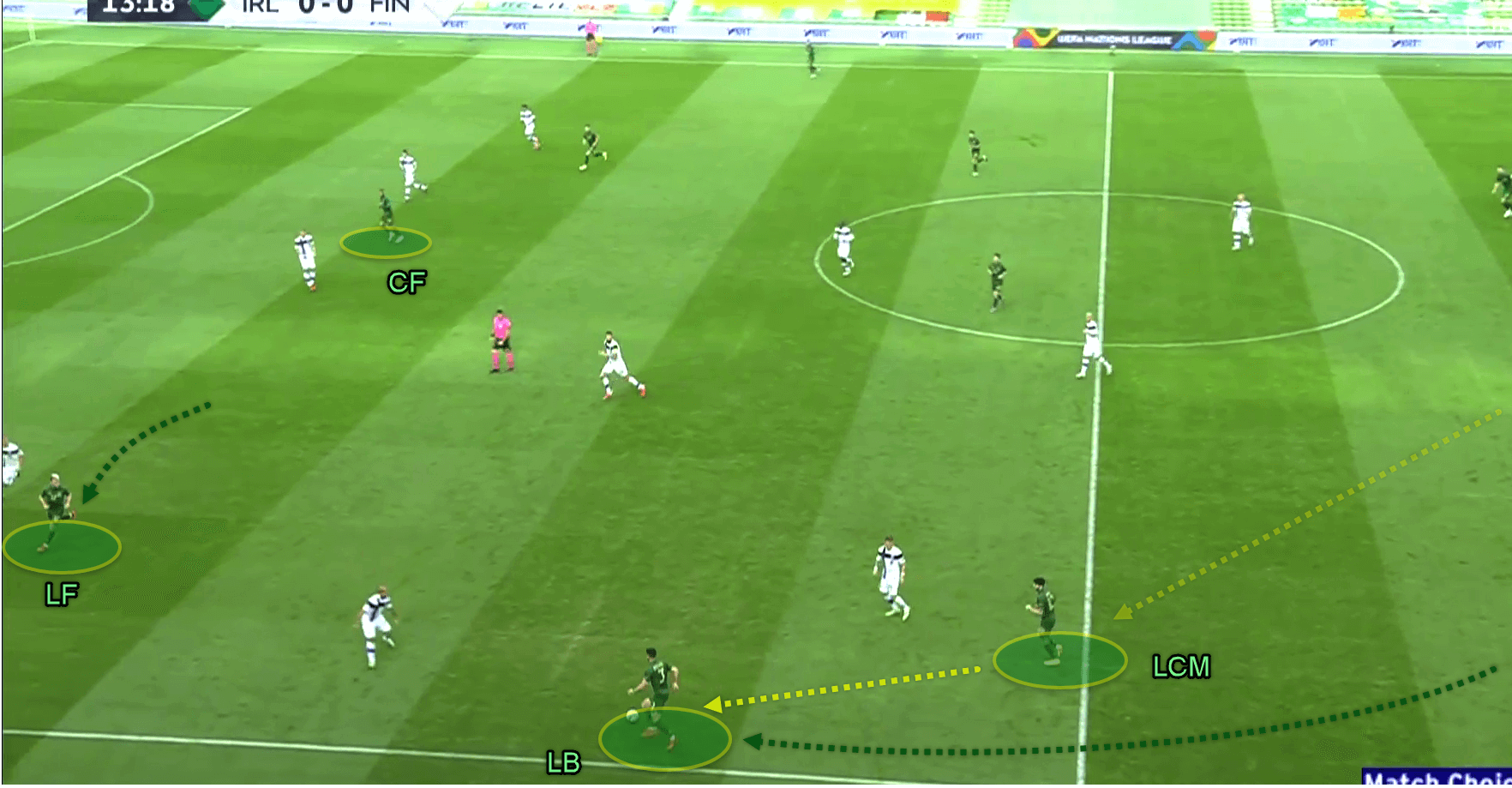
Second, The holding midfielder would drop deep into the half-space to receive the ball unmarked, in doing so, the midfielder draws in a Finnish midfielder to create space for the full-back to overlap. Before being challenged, the holding midfielder can release a pass into the full-back’s run to progress the attack.
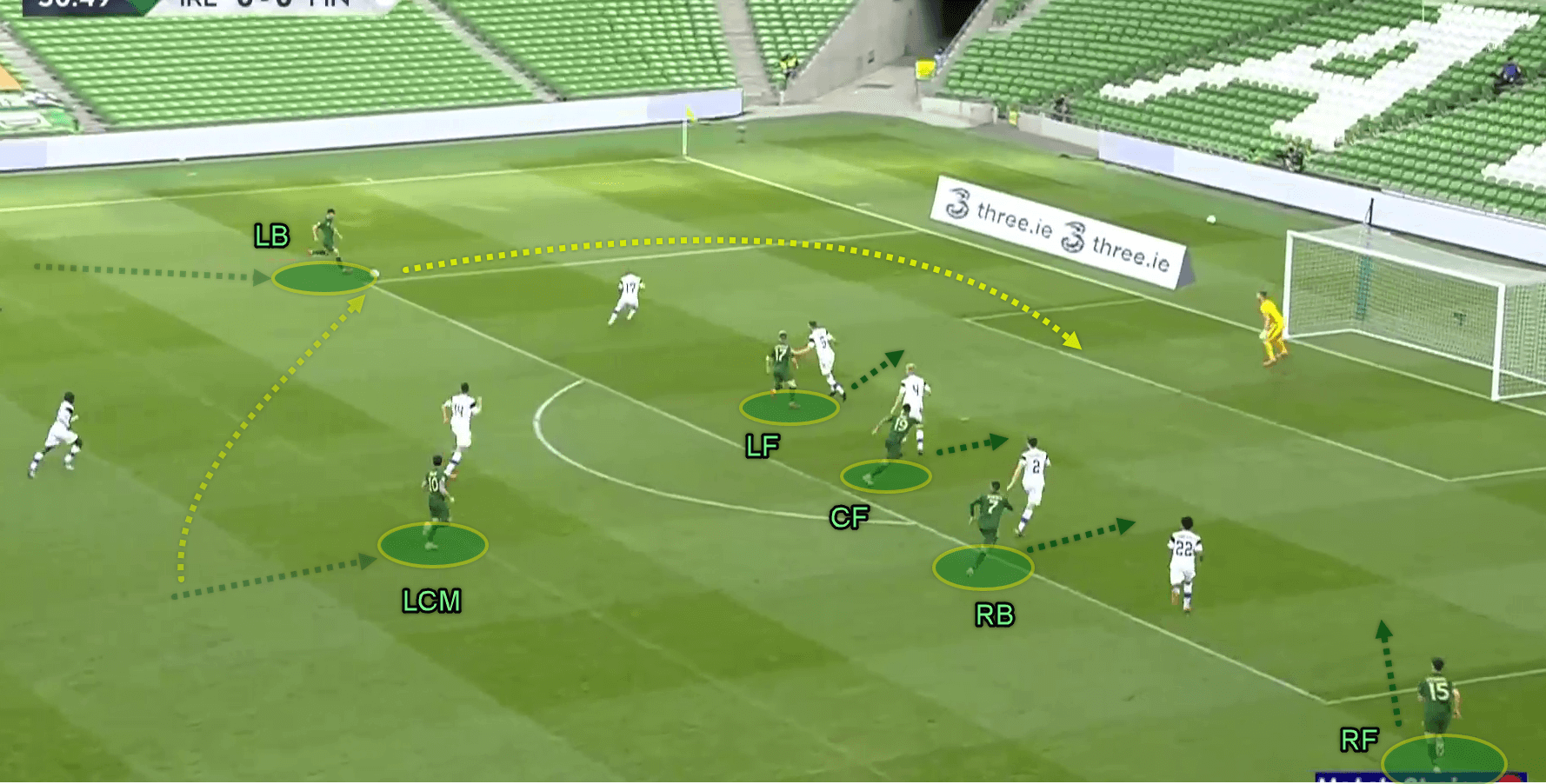
Ireland’s attacking intent from crosses, in those few moments Ireland generated high-value crossing opportunities out wide, we see the anticipation and organisation of the Irish forwards to attack the cross between the width of the posts.
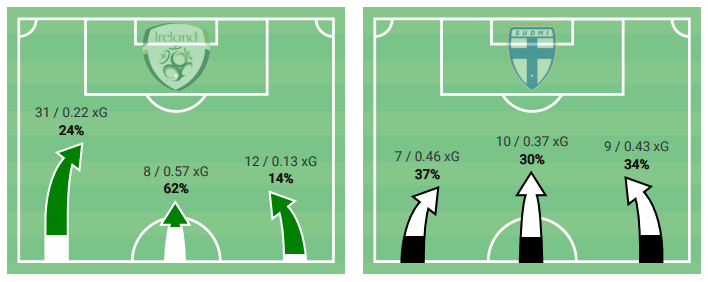
The data above shows both teams’ attacks by flanks’ as we can see by the data on the left, Ireland predominantly targeted the right side of the Finnish defence with almost three times as many attacks compared to the right flank and four times as many as central attacks.
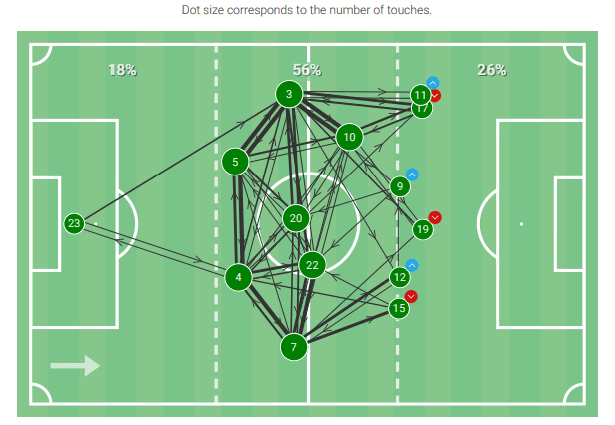
Above we also see Ireland’s passing network for the 90+ minutes. Accounting for combinations of three or more passes in the final 60% of the field by way of attack. The density of the lines between the back four and the holding midfielder helps us understand the men in Green exercised a lot of low-risk low-reward passes to find a safe opening in the final third.
One aspect of Ireland’s performance that perhaps restricted their chances to penetrate was how deep they played backwards when switching the play. On very few occasions was the play switched through midfield. Mostly, Ireland would play back on the edge of their third to safely switch possession to the other side of the field.
In doing so, this gave Finland ample time and opportunity to shift across and receive an attack on their weak side. Had Ireland of been able to switch the play through the midfield or even play long diagonal passes to the other side, then they would have found greater opportunities to attack the Finland penalty area.
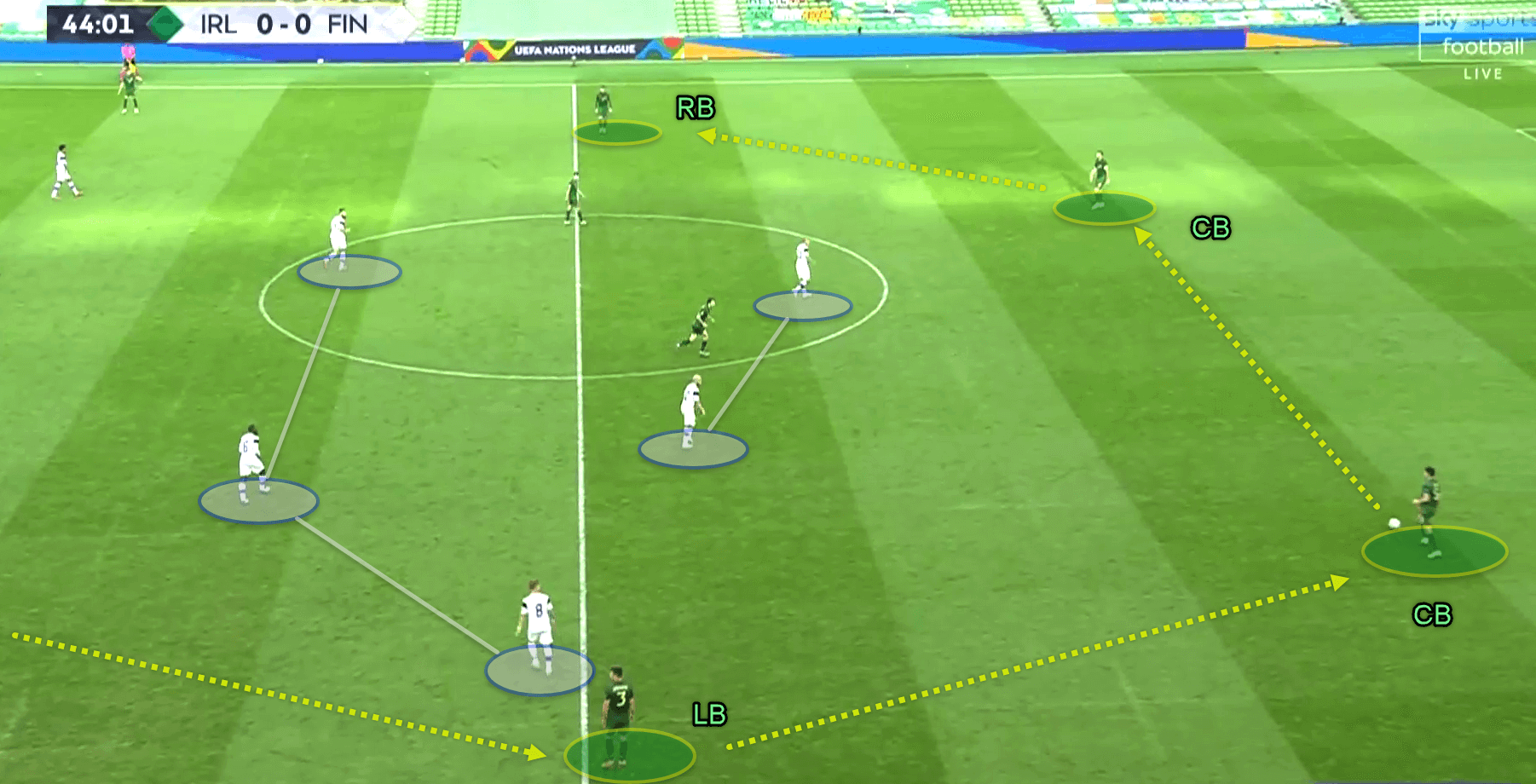
Above, we see the distances both vertical and horizontal Ireland used when switching the play. At this moment the left-back starts the switch, as the passing sequence goes back and across very deep in the Ireland half without any pressure.
If Ireland can improve on their ability to exploit the opponents weak side by switching through the midfield, then they will have greater chances in the forthcoming games. Along with increasing the tempo of the attack in the final third, by having inverted wingers drive at the defence and quickening the passes entering the box, I would be confident Ireland can increase their chances in front of goal as they advance in this campaign.
Finland’s efficient five
Crucial to Finland’s efficiency in and out of possession was their dynamic back five that would morph from a 5-3-2 in defence to a 3-5-2 when they attack. The key to Finland’s success in keeping a clean sheet was their numerical superiority and balance in the defensive phase.
As Ireland would commit a full-back, a forward and a central-midfielder in the wide areas, the Finnish we are able to match them for numbers out wide as well as remaining centrally compact to defend potential crosses into the box.
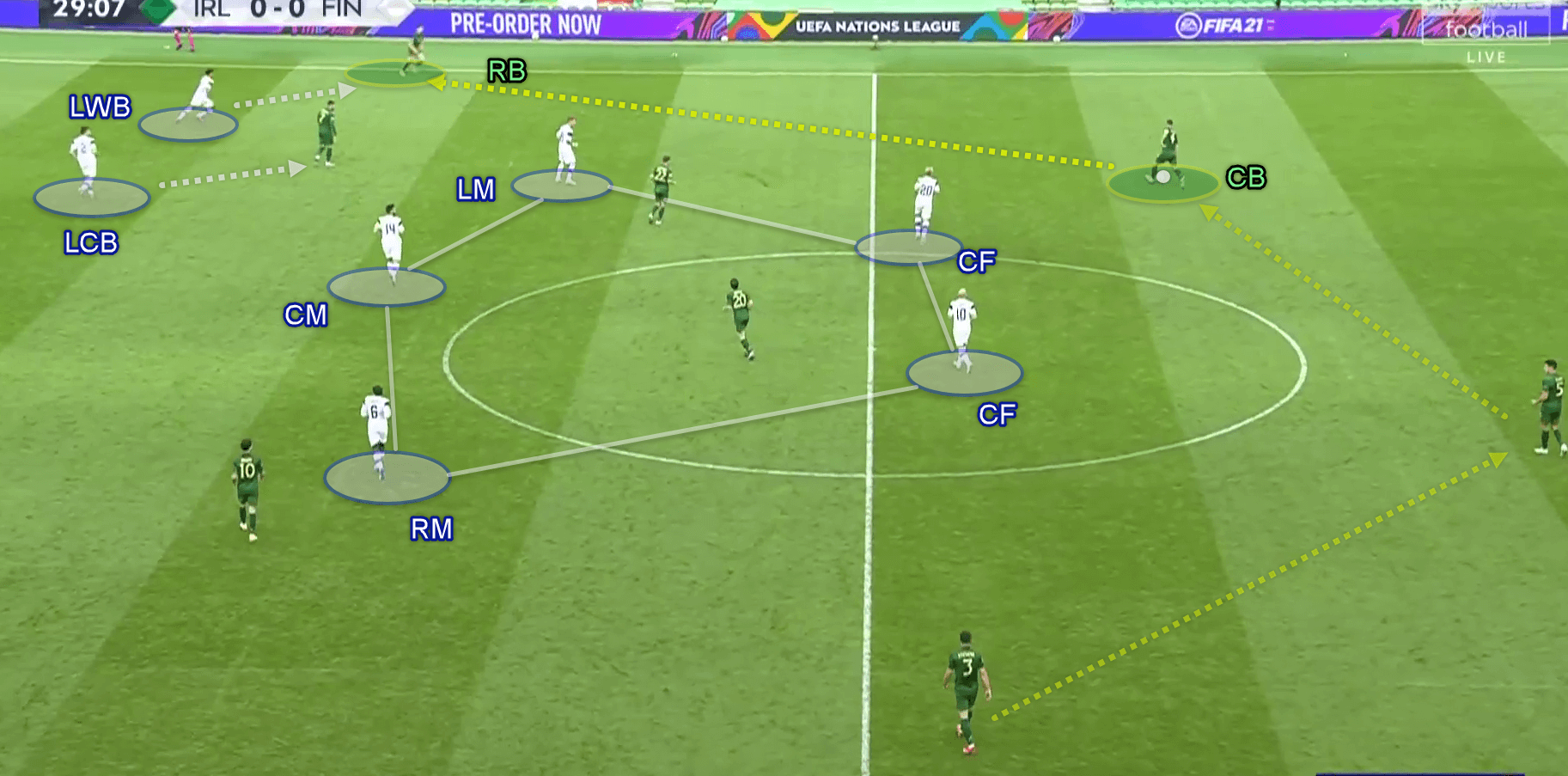
Above, we see how Finland’s centrally compact mid-block forced Ireland to progress their attack into wide areas. The trio in the Irish midfield struggled to receive passes from the defence, as they were screened by both forwards and marked man-for-man in the middle. Ultimately forcing Ireland to play to the wings.
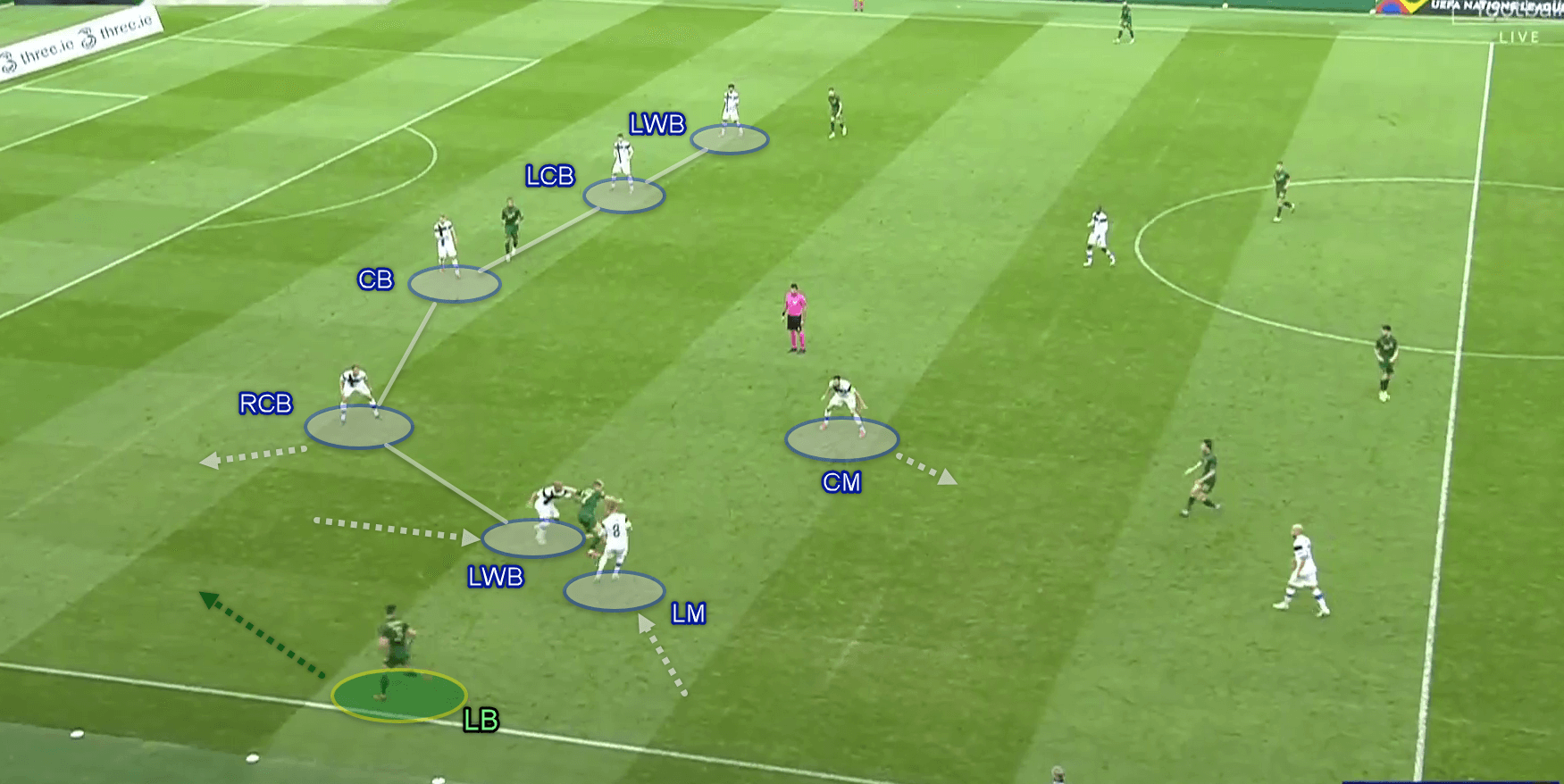
No matter Ireland’s patterns of play or impromptu attacks, Finland was well-coached and prepared to cut down the Ireland attacks as they entered the final third. Above we see how press and cover in the channel while still being centrally compact to mark the centre-forward of Ireland.
Above, the Irish left-back Enda Stevens makes an overlapping run in the free space, at the same time the ball carrier Aaron Connolly is pressed on both sides, denying him an opportunity to turn and play forward.
Notice the positioning of the right-centre-back who is prepared to press any forward passes in the channel as the wing-back and wide-midfielder press the Irish forward in possession.
Finland conceded a PPDA average of 42.3 in contrast to Ireland who allowed 18.1 passes per engaging in a defensive action. The staggeringly high numbers for Finland show us they were not interested in pressing Ireland in their third, such that they would remain compact, balanced and efficient in the defensive phase.
Finland direct in attack
Ireland shaded the possession average with 54% in contrast to 46% to the visitors. Finland was more efficient in attack, as 38% (10) of their attacks resulted in a shot compared to Ireland, who managed a less convincing 24% (12).
Finland was not worried about overcaution in possession as they seemed confident and capable to attack with purpose and pace in the build-up as well as in the transition to attack.
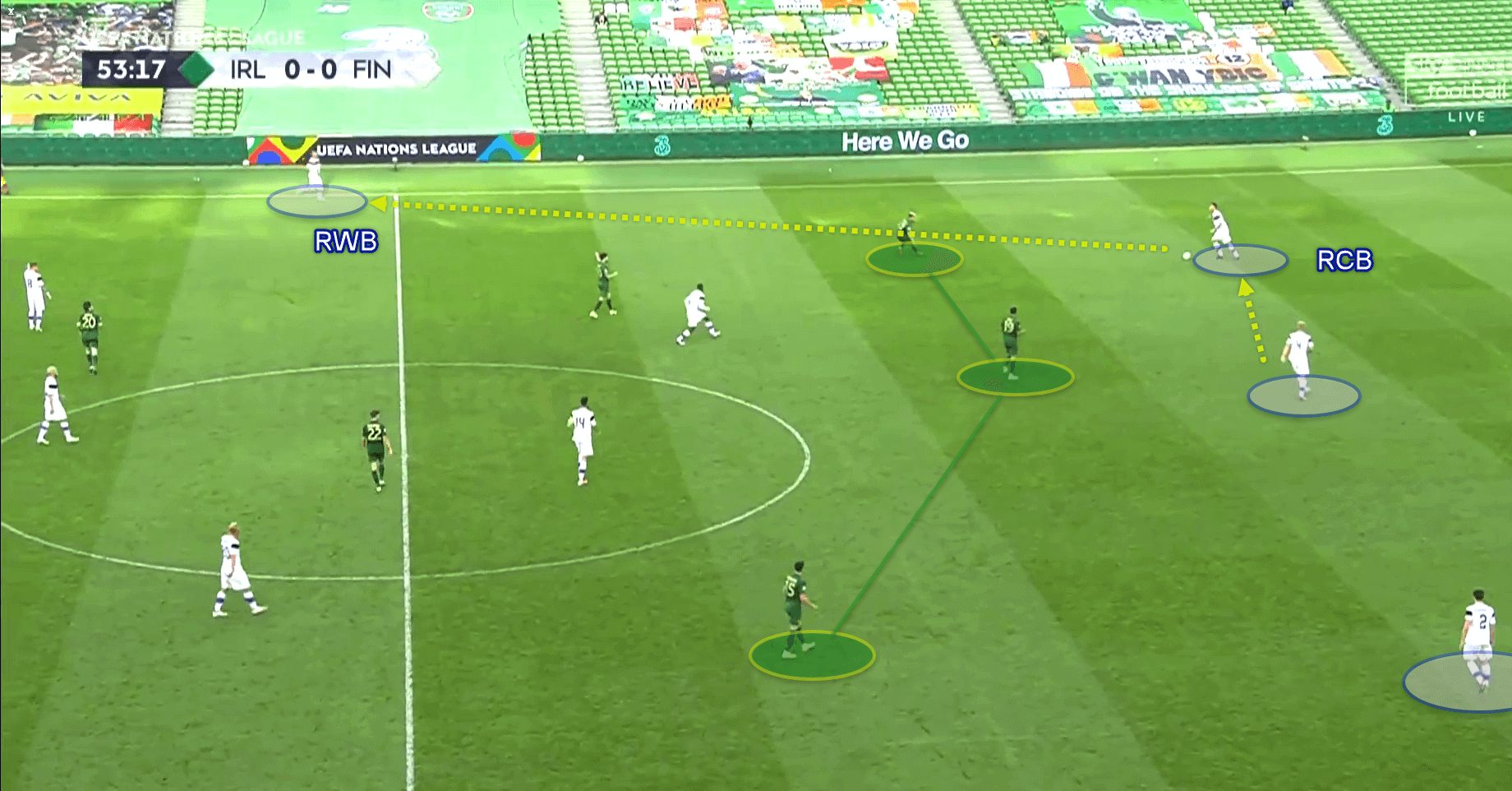
Above, we see Finland building through the thirds, Ireland occupies a mid-block; however, Finland’s horizontally stretched back three create the passing angles to break the lines. The first pass forward reaches the unmarked right-wing-back.
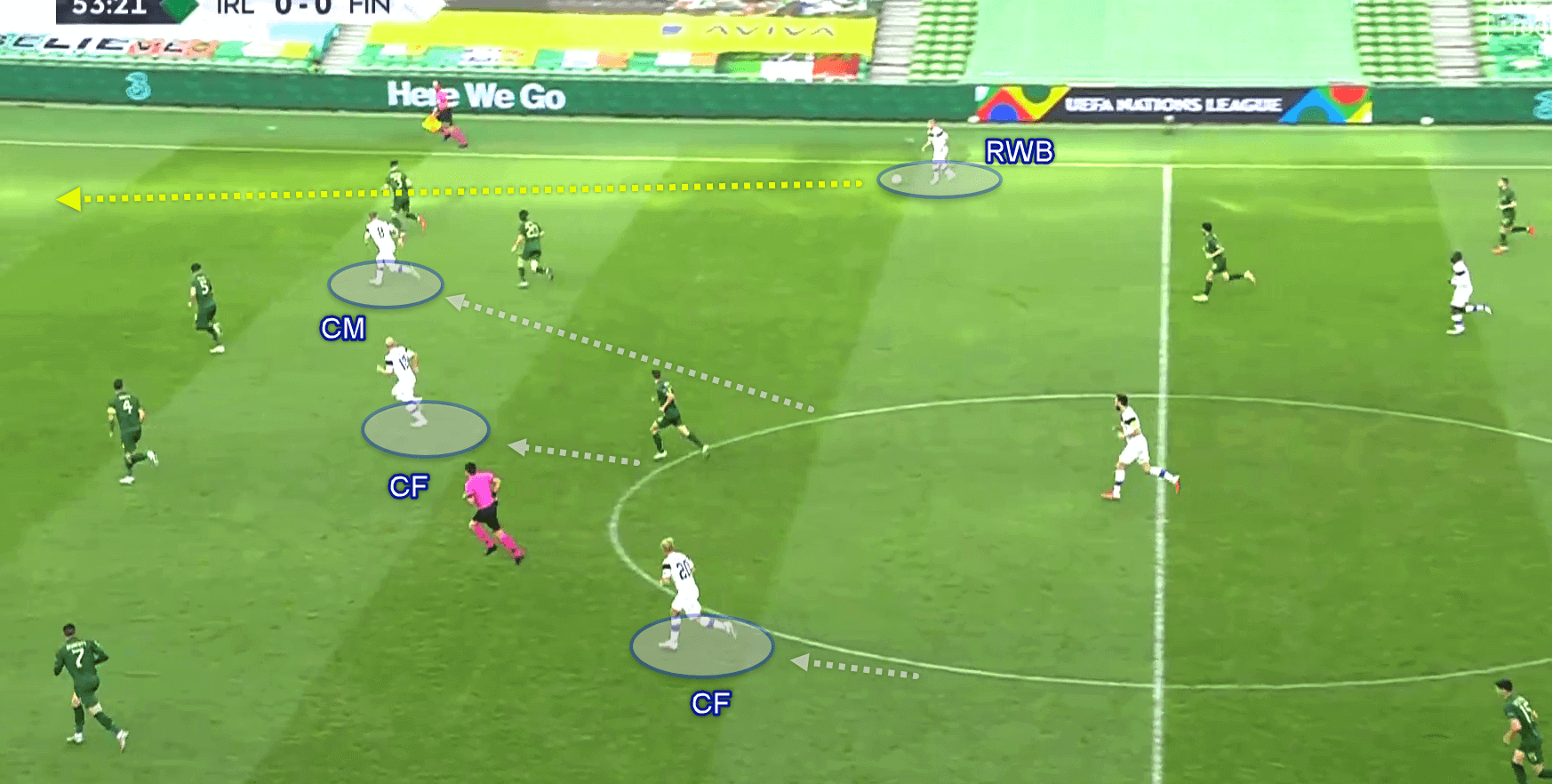
The centre-midfielder moves in reaction to his teammate in possession. As the Irish left-back steps out to engage the ball carrier the central-midfielder moves into the vacated space to receive a through ball.
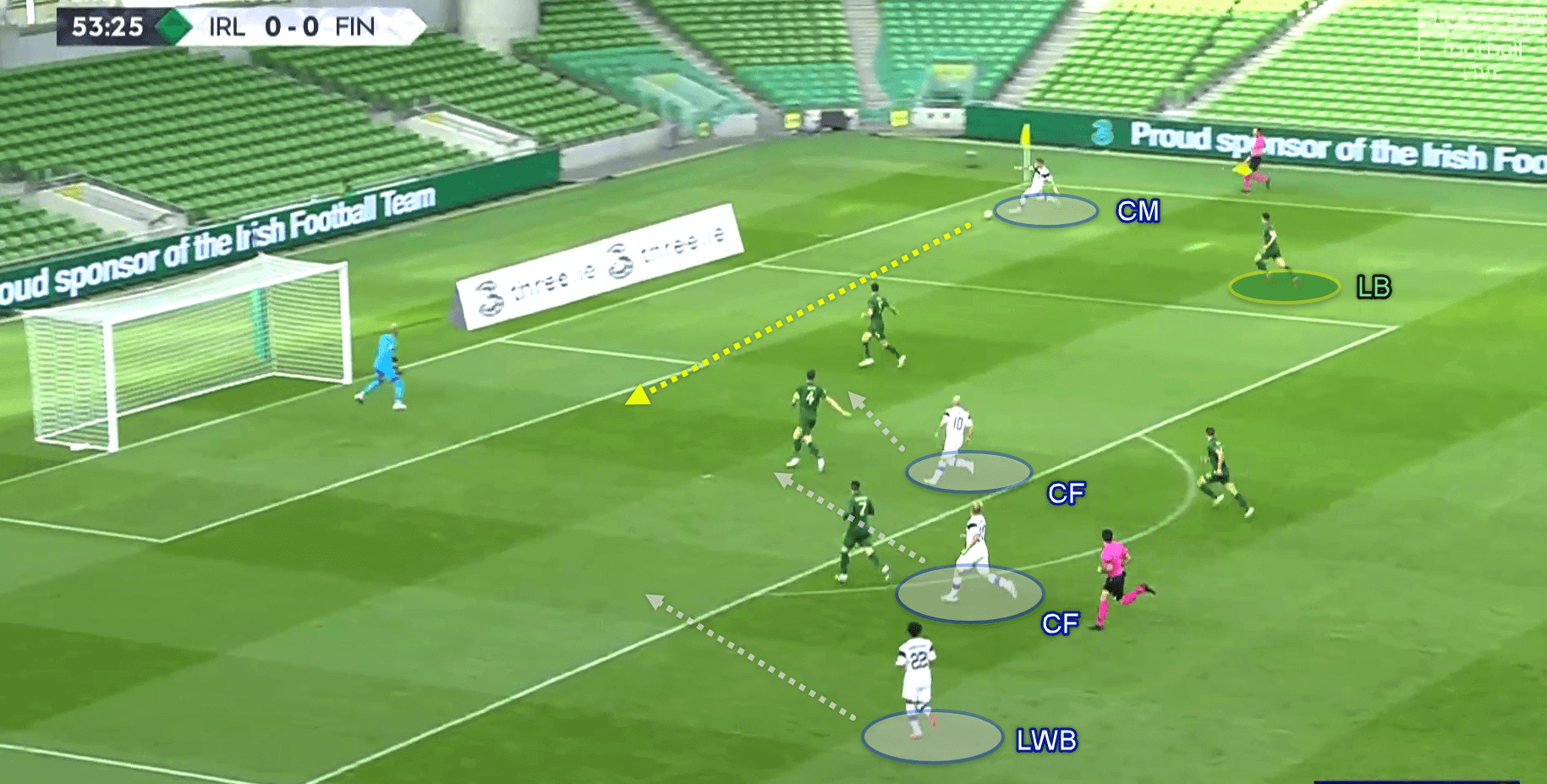
The central-midfielder receives and turns to attack the box just at the by-line, the recovering left-back makes a challenge and gives away a corner in the process. This quick break forward was found very rewarding for the visitors.
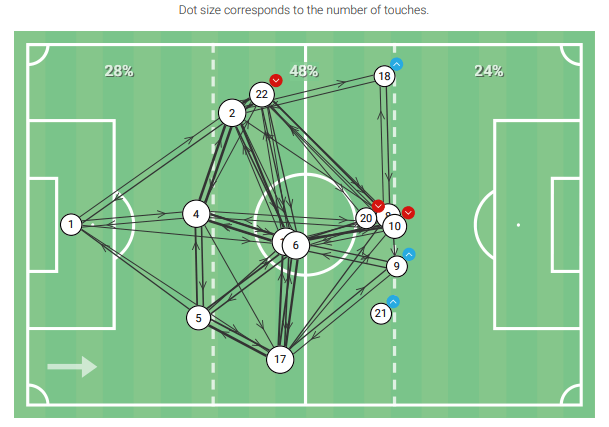
The data above shows Finland’s pass network for the 90+ minutes. The lines both vertical and horizontal show more even distribution in contrast to Ireland, who was more bottom-heavy. Giving us a better understanding, Finland had more purpose and poise to go forward immediately in possession.
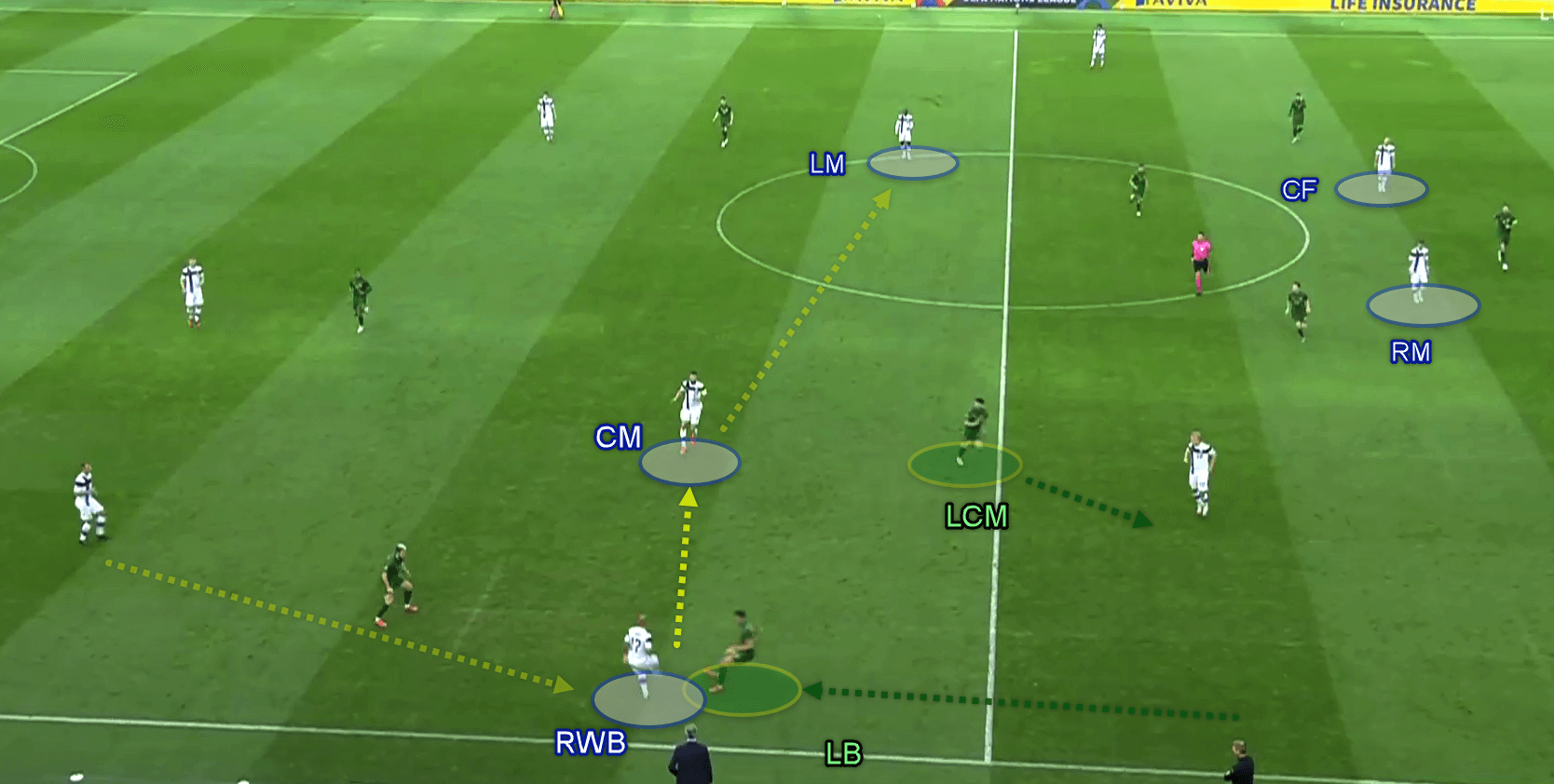
Again, from the image above, we see how Finland penetrated centrally, first causing an imbalance in the channel for Ireland to defend, only to play back inside and exploit the vacated space quickly.
Above, the right-wing-back gets pressed by the Irish left-back. As a result, the left-central-midfielder for Ireland has to drop and cover the attacker. Now the Finnish central- midfielder is free to receive a pass unmarked.
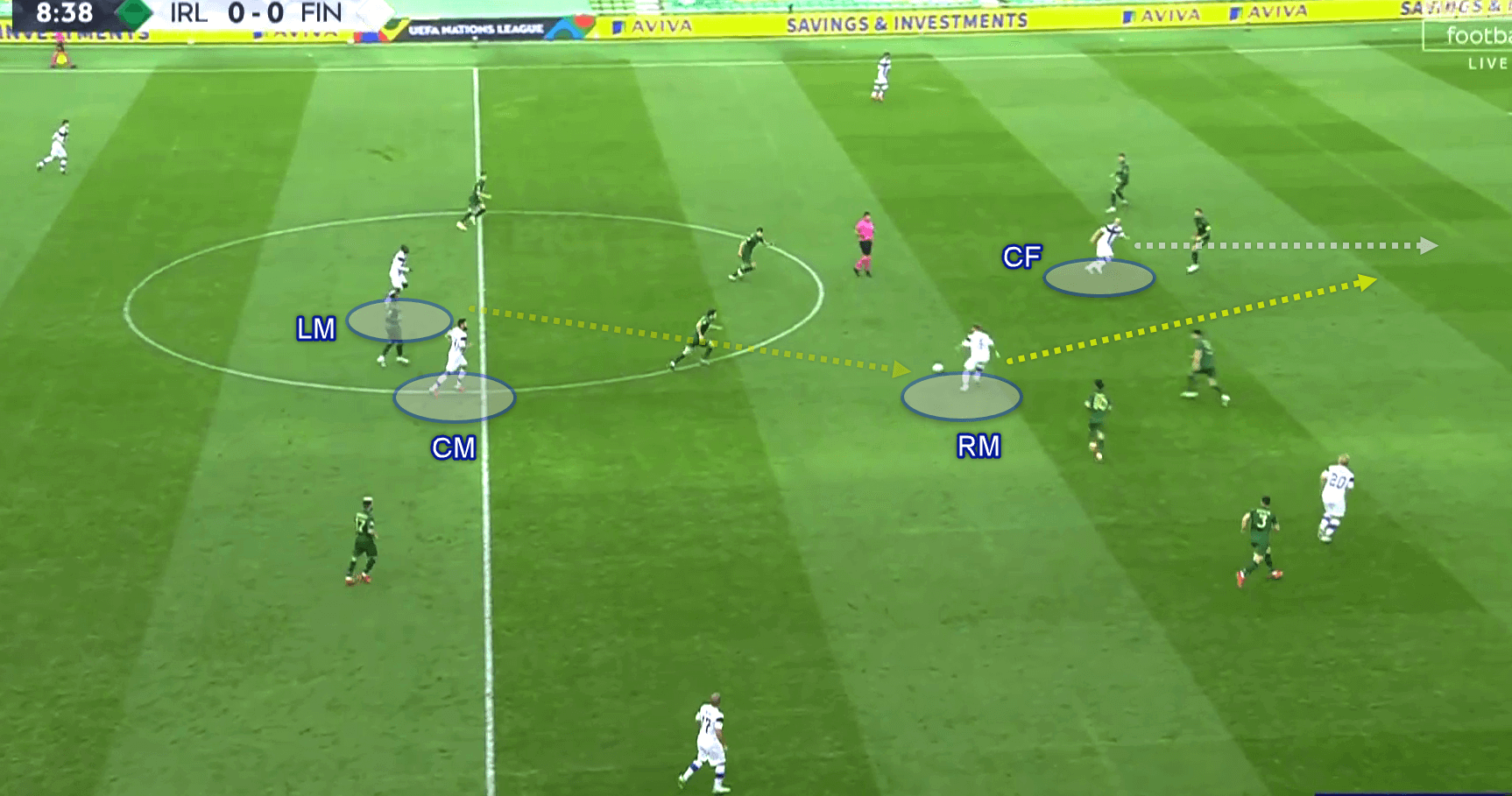
As the play progresses to the middle, the left-midfielder for Finland plays forward the right-midfielder who is an acting ’10’ in this phase. The RM turns upon receiving a pass and plays an angled pass forward to meet the run of the centre-forward.
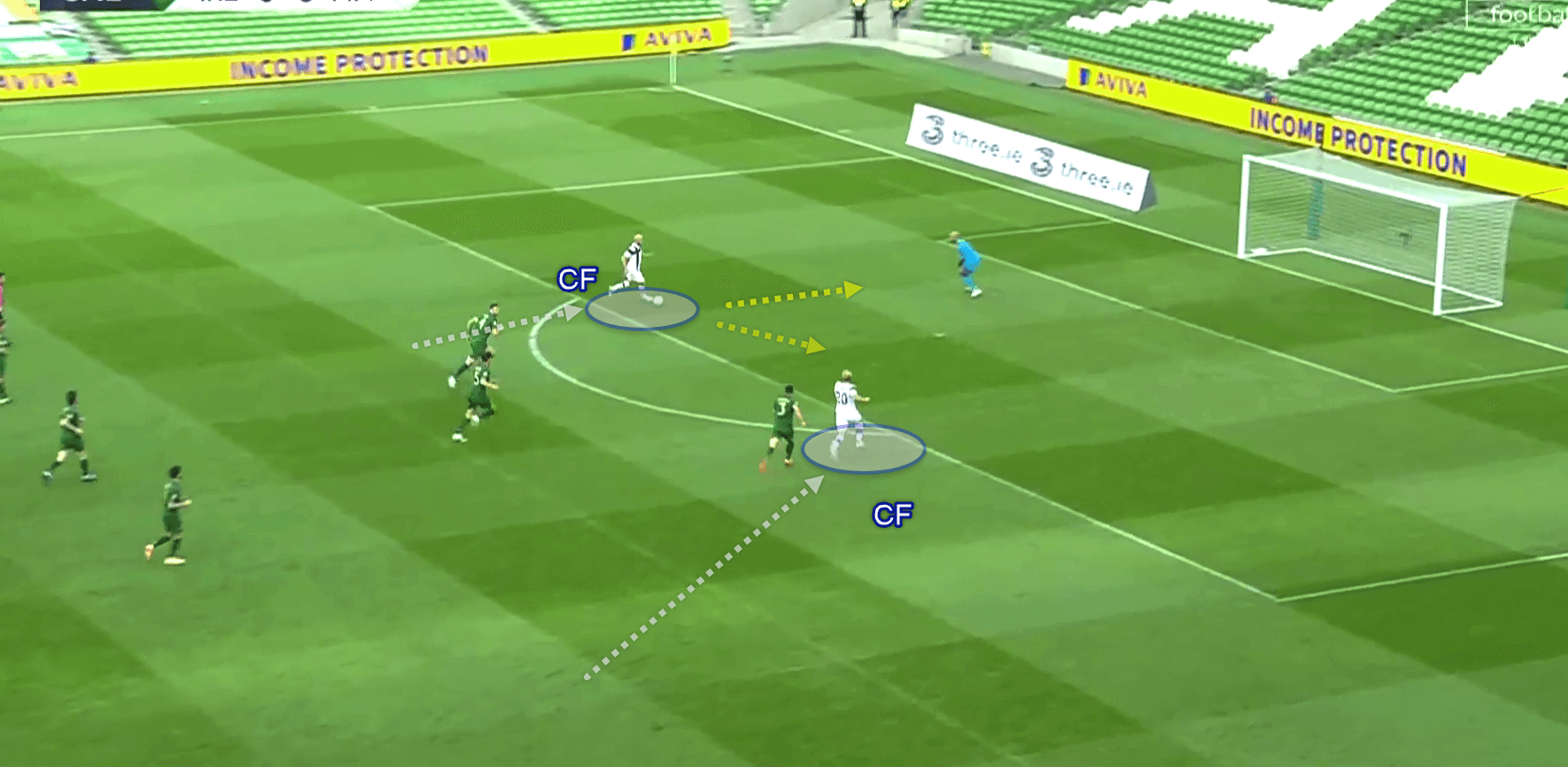
The centre-forward takes a touch inside to have both a view of the goal and the supporting striker. On this occasion, the Irish goalkeeper stops an attempted low-finish from the striker.
The modern-day 3-5-2 / 5-3-2 is the formation of some of Europe’s top club sides, used by such teams as Inter Milan, Lazio, RB Leipzig… the list goes on. Particularly teams who play four at the back and three in the middle seem to struggle in particular against the 3-5-2.
The Finnish players looked, calm, confident and sure of their roles in this game. Proving even with limited time in possession the can hurt teams out wide and centrally from the build-up or in a quick transition to attack.
Final thoughts
Stephen Kenny will do well to find praise in the media right now; no one will offer him a tip of the hat for blooding youth or for integrating a new fluid possession-based style of football, unrewarding as it is right now.
The former U19 Republic of Ireland manager is not far off though, the technical errors of the players fall on him. However, if Ireland manages to improve their style and tempo in the final third, we may well see tabloid heading very soon that reads something like ‘Kenny turns it around.’
Ireland was hurt by just one goal in the second half to give the visitors a 0-1 win, all from a simple defensive error. The highest level of the game is separated by fine lines, and Kenny for all the quixotic impatient and unfair criticism he will receive is at least showing he knows the game and is showing signs he can succeed at this level.
Finland looks an improving side, after their 0-1 loss to Wales in the previous game week they will take much confidence from this victory to push on and get another three points at home to Bulgaria on the 11th October.
To track the progress of both of these sides, be sure to check back in with us on Total Football Analysis.

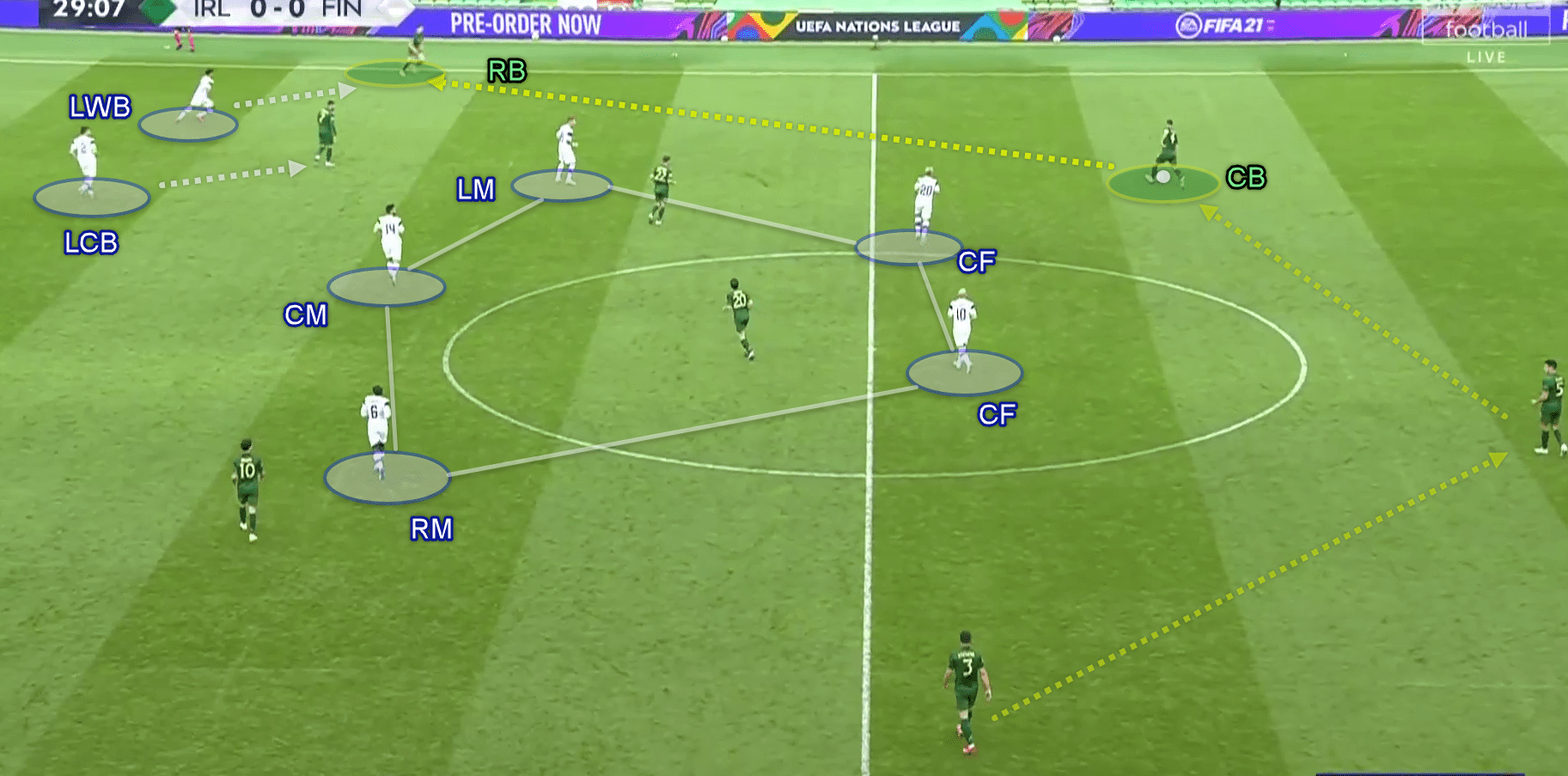



Comments